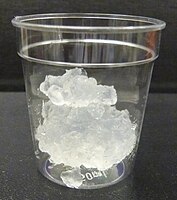
Photo from wikipedia
Nanocellulose is a type of nanomaterial with high strength, high specific surface area and high surface energy. Additionally, it is nontoxic, harmless, biocompatible and environmentally friendly and can be extracted… Click to show full abstract
Nanocellulose is a type of nanomaterial with high strength, high specific surface area and high surface energy. Additionally, it is nontoxic, harmless, biocompatible and environmentally friendly and can be extracted from biomass resources. The surface groups of cellulose show high surface energy and binding activity on the nanoscale and can be modified by using various methods. Because nanocellulose has a high elastic modulus, rigidity and a low thermal expansion coefficient, it is an excellent material for polymer reinforcement. This paper summarizes the reinforcement mechanisms of nanocellulose polymer composites with a focus on the role of theoretical models in elucidating these mechanisms. Furthermore, the influence of various factors on the properties of nanocellulose reinforced polymer composites are discussed in combination with analyses and comparisons of specific research results in related fields. Finally, research focus and development directions for the design of high-performance nanocellulose reinforced polymer composites are proposed.
Journal Title: Polymers
Year Published: 2020
Link to full text (if available)
Share on Social Media: Sign Up to like & get
recommendations!